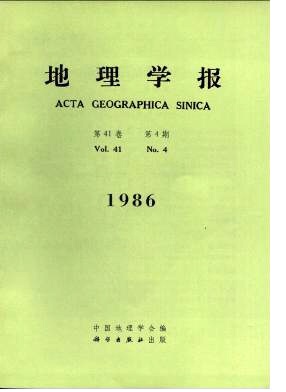Xu Xueqiang, Gar-on Yeh
China’s cities belong to the clustered pattern, examining them by Kolmogorov-Ami-nov formula and the Lorenz curve. The highest density of cities and towns has happened in Shanghai municipality: 56.77 cities and towns per 10,000 km2. Zhejiang and Jiangsu Provinces occupy second and third places, according to the density of urban settlements: 17.06 and 11.67 cities and towns per 10,000 km2 respectively. The lowest density indexes of cities and towns are found in Xizang Autonomous Region and Qinghai: 0.08 and 0.12 respectively, the density of cities and towns is regularly reducing from East to West in China. The provincial variation of the density of cities and towns can be explained by the regression techniques. A correlation coefficient of 0.87 has been obtained by the regression analysis of the density of cities and towns, in which the population density as independent variable. In provinces and autonomous regions, the greater the population density, the greater the density of cities and towns. A multiple correlation coefficient is 0.96, which was found by multiple regression analysis of the density of urban settlements with the gross industrial and agricultural output value, per capita industrial output, the index of the railway length, per rural person grain output, and population density as independent variables. These five variables can explain 92% of the provincial variation of the density of urban settlements.Because the urbanization is measured by the proportion of urban population to the Provincial total ones, the urbanization level of those provinces with concentration of unban settlements and urban population seems to be not so high. Mostof the relatively high urbanized provinces and autonomous regions are located in Northeast, North and Northwest China, while the provinces with moderate and lower urbanization level are found in the East, Central and South provinces. Variables of population density, size of area, and industrial-agricultural output ratio, per capita industrial output, per capita agricultural output, per capita total production output can be used a for reflection of provinces’ population and economic characteristics respectively. Two factors are identified by factor analysis "with varimax rotation. The first factor is industrialization that measures the levels of industrialization and productivity and the second faetor-ispoptulation density that reflects the general population distribution characteristics of a province or an autonomous region. As these two factors are orthogonal each other, it suggests that there is not direct relationship between the industrialisation level with population size or density in every province or aut. region. A multiple correlation coefficient of 0.863 has been obtained by multiple regression analysis between urbanization level with the factor scores of industrialization level and population density as independent variables. These two factors could explain 74.5% of the provincial variation of urbanization level. The urbanization level of a province oir an autonomous region is related positively with industrialization level but negatively with population density. The industrial distribution policy encourages urbanization for the less densely populated Northeast, North and Northwest provinces and autonomous regions. To a certain extent, the control of urban population discourages urbanization for the densely populated East.There is big variation in the primacy index of the provinces in China. It ranges from 1,009 in Auhui to 10.23 in Qinghai (in 1982). The provinces and autonomous regions with high primacy index are mainly concentrated in the Northwest and Southwest regions of China, except Guangdong an Hubei provinces. The indexes of provinces and aut. regions in West China have increased since liberation, but in recent years, they have begun to fall in some provinces and autonomous regions. Most of the Northeast, East, North, and Central South provinces have moderate or low primacy indexes, which have declined since liberation. The provincial variation of the
